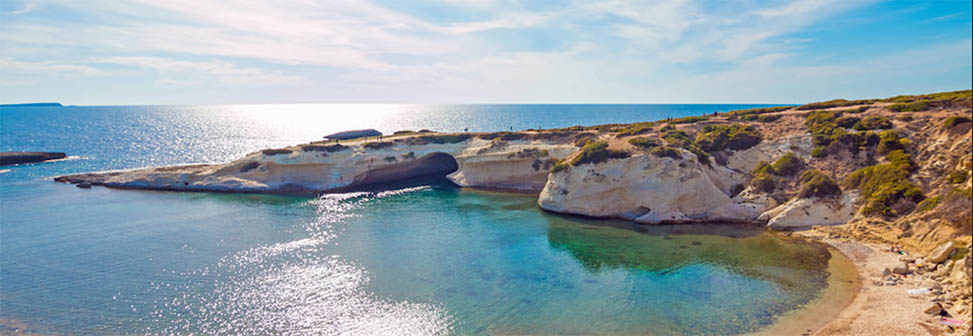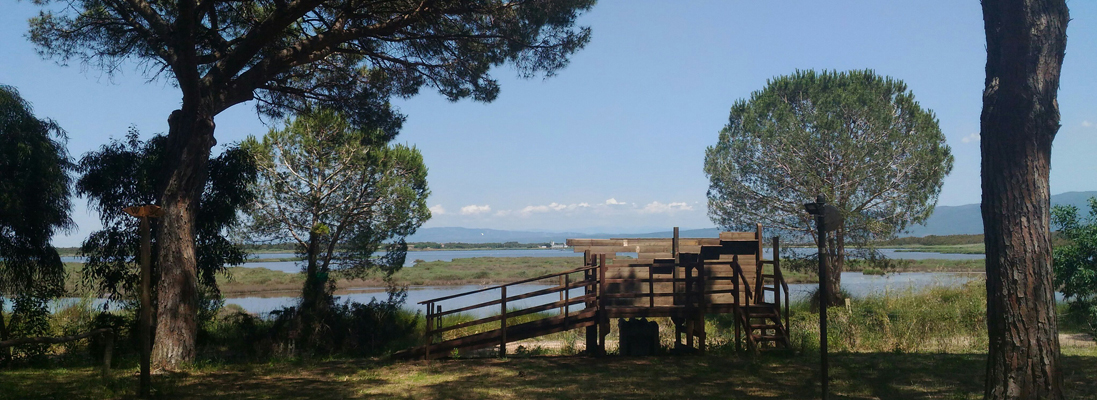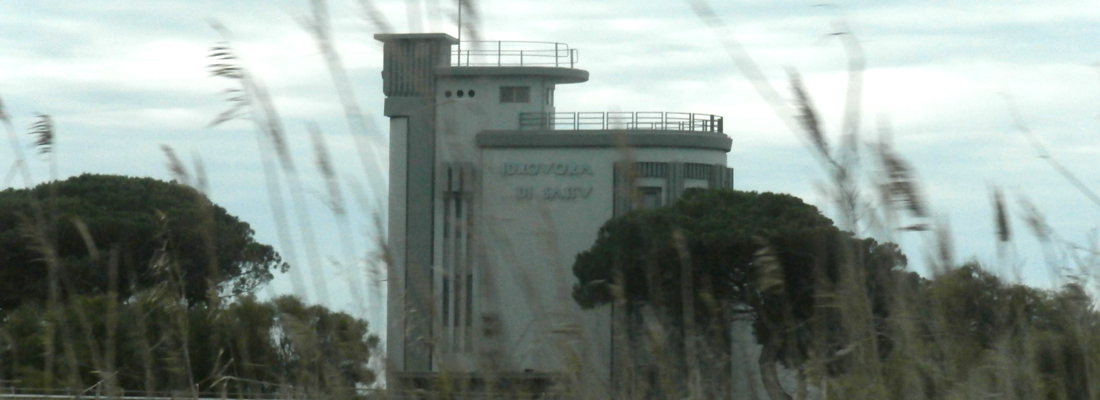There are places that, due to an unavoidable disposition of the spirit, are destined to represent better and more than others the identity, the vocation, the feeling of the people who elected them as their home. There are archaeological sites and monuments which, in them, have risen to an iconic role and to an importance recognized beyond their borders of origin. Through places and monuments you can read pages of world history: an anthology of precious references, a sort of gospel of cultural diversity, which requires a collective effort so that it does not go to degrade or get lost permanently. To raise awareness of institutions and public opinion, on April 18, 1982 - on the occasion of a symposium organized by the ICOMOS (International Council on Monuments and Sites) in Tunisia - the establishment of the "International Day of Monuments and Sites" was proposed: the project was approved by the Executive Committee which provided practical suggestions to the National Committees on how to organize this day. In turn, the idea was adopted by the General Conference of UNESCO which, at its 22nd session in November 1983, recommended that Member States consider the possibility of a "World Heritage Day". The identification, protection and transmission to future generations of the world's cultural and natural heritage is one of UNESCO's main missions.
The website of the United Nations Educational, Scientific and Cultural Organisation reads: "Heritage is the legacy of the past that we benefit from today and that we pass on to future generations. Our cultural and natural heritage is an irreplaceable source of life and inspiration. Places as unique and diverse as the wild expanses of the Serengeti National Park in East Africa, the Pyramids of Egypt, the Great Barrier Reef of Australia and the Baroque cathedrals of Latin America are our World Heritage. Sardinia, an archaic land and cradle of ancient civilizations, is also an important hub in the cultural life of the Mediterranean. The rediscovery of the different local peculiarities and the enhancement of the community dimension can be read and interpreted within a vast project to protect the environmental specificities of the places. The environment can be a symbolic reference, and not only, of feelings of identity and belonging, but the latter, in turn, can be an opportunity for renewed attention to the environment. Reflection on the links between local identities, the management of environmental problems and forms of community existence is the main theme of Strategy 7 of the Maristanis project, coordinated by the MEDSEA Foundation. As part of the project, a map of the ecological heritage has been developed, relating to the historical use of the wetlands of Oristano. The field visits have been carried out since November 2017 during the official events of the Maristanis project (visits of the International Steering Committee, Wetland Day, cultural events) and have been organized to meet each Municipality and the different interest groups (associations, schools, economic operators, fishermen). A work of sharing that has led to the identification of the first 4 cultural heritages (divided by type on the basis of the PPR classification) on which the communities intend to intervene and invested. For the tangible heritage: Idrovora di Arborea (Architectural); Torre Marceddì (Landscape); Arco S'Archittu (Landscape). For the intangible heritage: art of weaving with the reed and marsh grasses of San Vero Milis. The aim is ambitious: to strengthen the link between the environment and the territory in order to promote culture and economically sustainable activities.
Latest news

DEEP DIVE: The Alarming State of the Ocean – Inspiring Action and Searching for Solutions (Webinar)
In celebration of World Ocean Day, MEDSEA invites you to the online event "Deep Dive: The Alarming State of the Ocean", a detailed analysis of the challenges that oceans are…

Fire Monitoring Test successfully conducted in Santu Lussurgiu thanks to IoT Technologies
At the end of April, a major breakthrough in fire prevention technology was achieved in the forests of San Leonardo. Thanks to pre-fire detection sensors, an IoT (Internet of Things) technology developed and…

REST COAST, at the annual meeting in Groningen, demonstrates the effectiveness of natural restoration of aquatic systems
The standstill of the Nature Restoration Law, the European law on nature restoration, stalled in its final approval phase in the Council due to the hesitations of some Member States, has…

TransformAr makes a stop in Finland for the sixth Consortium Meeting
In mid-April, the sixth Consortium meeting of the H2020 TransformAr Project was held in Lappeenranta, recognized as the Climate Capital of Finland. This city truly exemplifies sustainability, with 100% of waste recycled and all…

Launch of the PLASTRON Project in Genoa: A Cross-Border Initiative for the marin Plastic & Paper Recycling
The PLASTRON project is about to start. With the goal of improving the sustainability of local communities by providing knowledge and tools for collecting and transforming plastic from the coast…

Wetland4Change to Address Climate Change with Wetlands, Kickoff in Sofia
Last week, hosted by the University of Forestry in Sofia, the kickoff of "Wetland4Change" took place, marking the start of an ambitious Interreg Euro-MED project within the Natural Heritage Mission aimed at…

The Capo Carbonara Marine Protected Area towards a New Zoning with Blue4All
A new co-management model to reorganise marine protected areas, benefiting from all the tools and knowledge provided by the Blue4All project will be soon implemented in Sardinia. Later last month, preliminary meetings…

TransformAr, Adaptation Pathways to Climate Change for Fishing Validated, All Set for Sensor Installation
TransformAr enters its most operational phase at the pilot site in Oristano where, in March, the MEDSEA team met with the Municipality of Terralba and the fishermen of the San Giovanni Lagoon from the Marceddì Consortium to…

Revitalizing the Mediterranean: ARTEMIS Project Unites Environment and Innovation
March marked the launch of "Artemis", a project of the Interreg Euro-MED Programme that seeks to combine the ecological benefits of seagrass with innovative financial strategies, such as Payment for Ecosystem…

Petit Noirs: From Senegal to Arborea to Combat Illegal Immigration with Mussel Farming
Sustainable mussel farming in Arborea becomes an international example with a project linking Dakar, Senegal, with Sardinia, aiming to combat illegal immigration and generate economic opportunities.

The Charm of Wetlands in Sardinia: Over a Thousand Visitors in the World Wetlands Day Event Calendar in Sardinia"
With over 30 events, from January 27 to March 10, 2024, the MEDSEA World Wetlands Day in Sardinia comes to a close. The initiative, which falls in the month when wetlands are…

First Meeting of the DesirMED Project in Venice: A Step Forward in Climate Adaptation in the Mediterranean
Last month, the historic city of Venice hosted the first meeting of DesirMED, a project funded by the HORIZON Europe program aimed at addressing one of the most pressing challenges of…

Sails Towards the Future: The UniCa Sailing Team and the Challenge of Eco-Sustainable Boats in Sardinia
In Sardinia, circular and low-impact solutions for water sports and sailing are being studied. The University of Cagliari, together with the UniCa Sailing Team, is working on the construction of an…

The first General Assembly kicked off in Lecce: for a more resilient MPAs network
The first General Assembly of the "Blue 4 All" project took place in Lecce from January 23 to 26, 2024. The event, hosted by the CMCC Climate - Euro-Mediterranean Center on Climate…

It's Time to Celebrate Wetlands: join World Wetlands Day Sardegna 2024
In Sardinia, February is the month of wetlands! We celebrate World Wetlands Day on the occasion of February 2nd, which marks the 53rd anniversary of the establishment of the RAMSAR Convention for…

TransformAR Reaches Halfway: The Progress in the San Giovanni Lagoon
TransformAR, at the pilot site of Marceddì-San Giovanni (Terralba) in Sardinia, one of the six demonstration sites of the project, is gaining momentum. The project, which develops transformative adaptation solutions to climate change…
- 1
- 2
- 3
- 4



